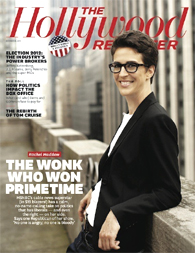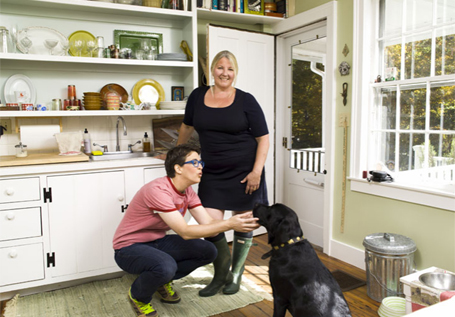In a new cover interview with The Hollywood Reporter published on Wednesday, the 38-year-old said she is ambivalent about the assimilationist aspect of gay marriage.
"I feel that gay people not being able to get married for generations, forever, meant that we came up with alternative ways of recognising relationships," Rachel Maddow told the Reporter. "And I worry that if everybody has access to the same institutions that we lose the creativity of subcultures having to make it on their own. And I like gay culture."
Maddow lives in New York City and with her partner in Northampton, Massachusetts. The couple met in 1999 when Maddow was hired to dig tree stumps out of her would be partner’s front yard. Maddow described it as being “love at first sight."
"We know a lot of people who have gotten married," she said, "but I don't think we feel any urgency about it."
Massachusetts was the first U.S. state to issue marriage licenses to same-sex couples on May 17, 2004.

The Rachel Maddow Show, which was launched in 2008, is now the number one program on MSNBC and has surpassed CNN in primetime for eight consecutive quarters although it still lags behind Fox News, as noted by the Reporter.
Possibly the most butch looking lesbian on television, the 5-foot-11 boyish looking Oxford PhD holder in political science, AIDS activist, and defense nerd (she's working on book about the military, and her father is a former Air Force captain) discussed her fashion style, meeting and falling in love with her partner, and politics in the wide-ranging interview.
On her fashion style and being TV-friendly: "I decided at the start of this that there are certain things that you need to do visually in order to be on TV," she says. "Like you need to wear a blazer and you need to have makeup put on you. You need to meet some basic conventions. I have a monochrome rainbow of the exact same $19 blazers [from H&M]. If you can commit to meeting those basic conventions in a way that is as low friction as possible, then you don't have to think about it again. The not thinking about it is an active value for me."
Rachel Maddow’s interview with The Hollywood Reporter can be read here.
Daniel Harris in his book The Rise and Fall of Gay Culture published in 1999 similarly pondered the fate of gay (male) culture as homosexuality becomes gradually accepted by society and posited that assimilation would spell the end of a distinctive gay male sensibility, one which he defines to be a "political response to oppression.” He wrote that gay men would inevitably have to discard certain gay cultural markers (such as drag, camp, sexual unconventionality, and a propensity toward the fine arts) that would impede their assimilation into the mainstream. The first chapter “The Death of Camp: Gay Men and Hollywood Diva Worship, from Reverence to Ridicule” can be read here.
Readers, what do you define as gay subcultures or gay cultural markers? Does being assimilated into the mainstream mean having to be invisible as a gay person? Is it important to you and the community to hold on to any gay subcultures or visible markers, however you define it to mean, as homosexuality becomes increasingly more accepted by society?

